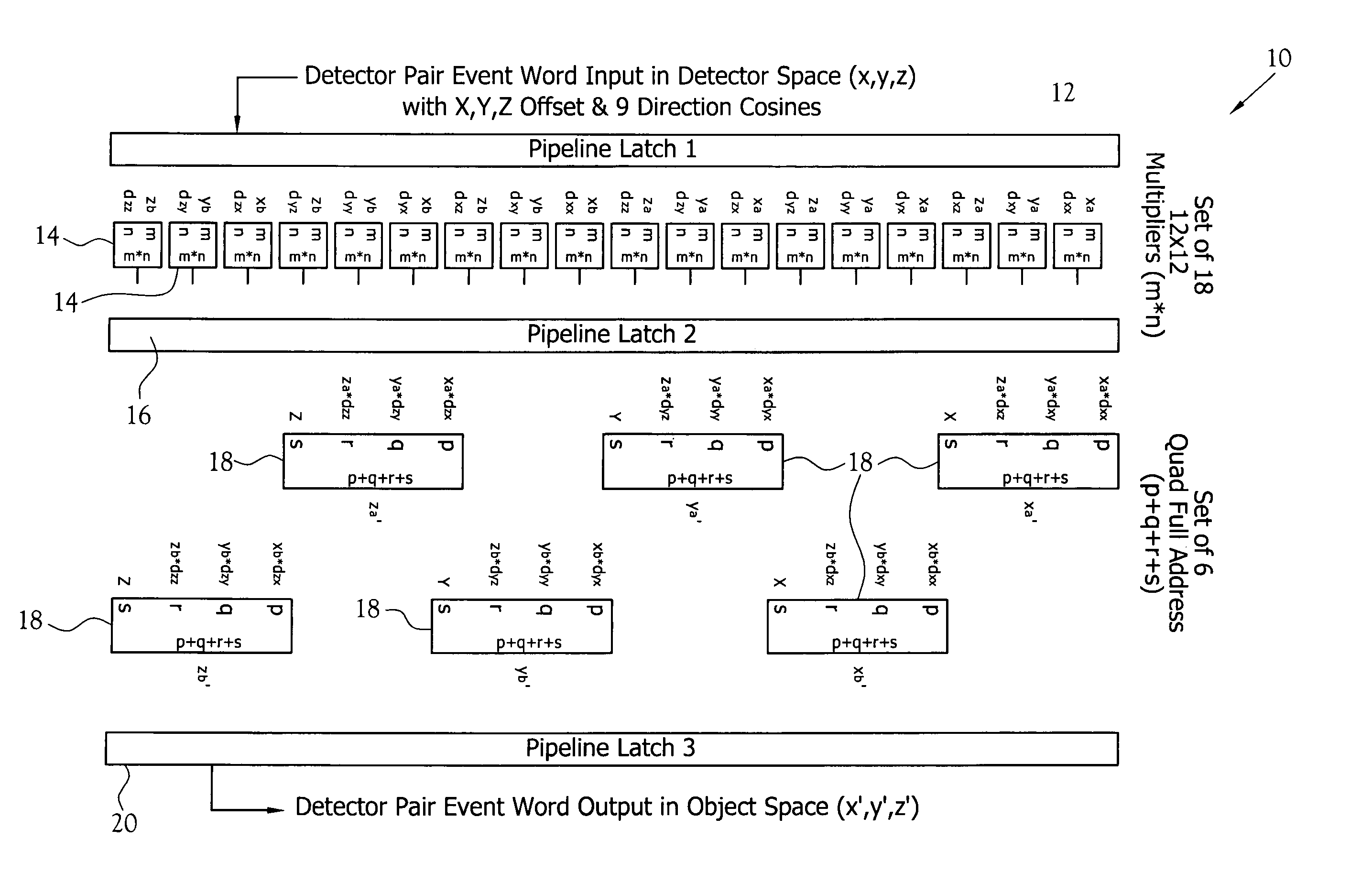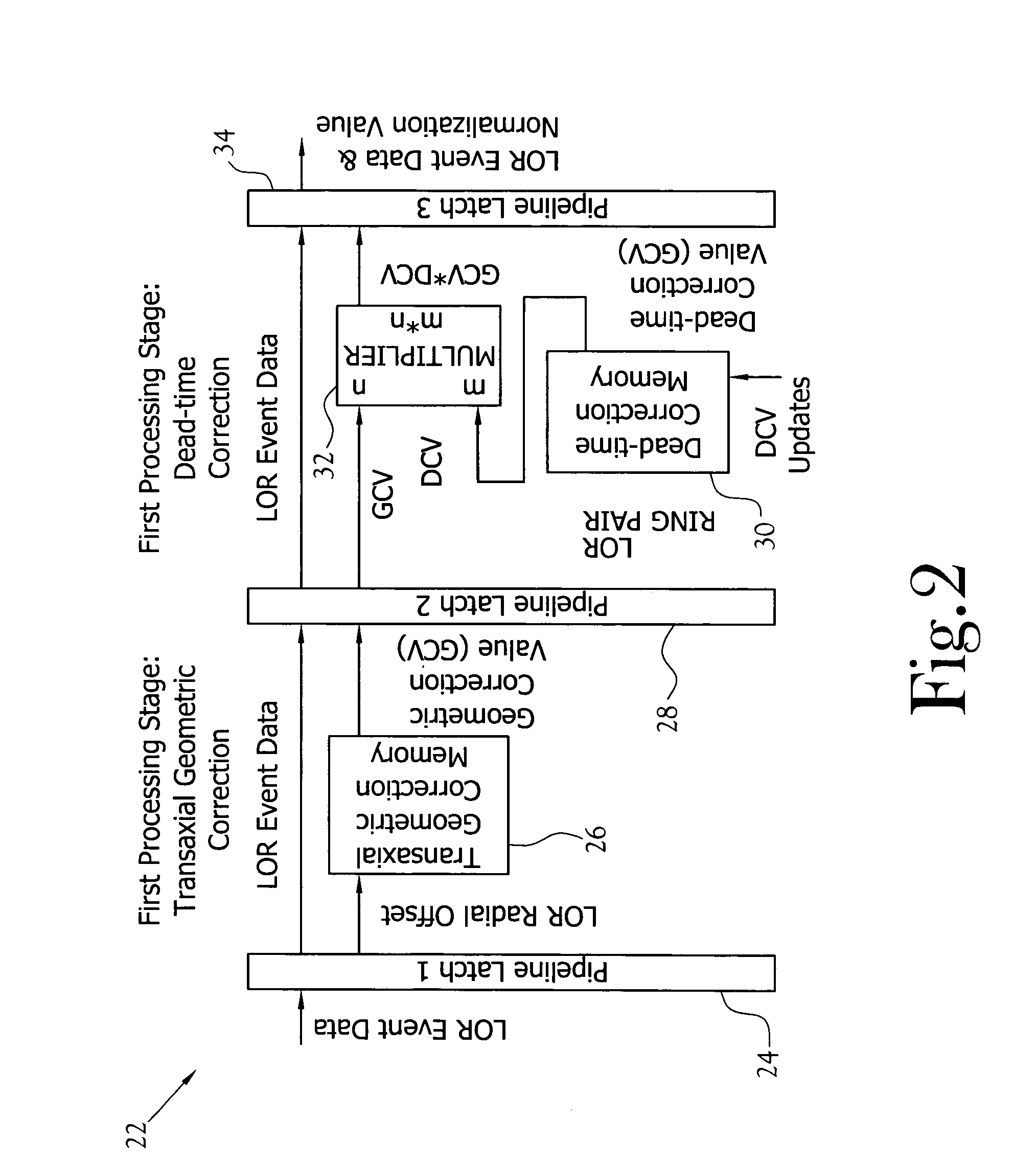On-line correction of patient motion in three-dimensional positron emission tomography
a three-dimensional positron emission tomography and patient technology, applied in tomography, instruments, applications, etc., can solve the problems of blurred pet image, time-consuming reprocessing of file data, and mode approach to motion de-blurring
- Summary
- Abstract
- Description
- Claims
- Application Information
AI Technical Summary
Benefits of technology
Problems solved by technology
Method used
Image
Examples
Embodiment Construction
[0028]A device and method for on-line correction of patient motion in three-dimensional positron emission tomography (3D PET) incorporating various features of the present invention is illustrated generally at 10 in the figures. The device for on-line correction of patient motion in 3D PET, or device 10, is designed to apply a correction for patient motion in an on-line and real-time manner. Moreover, the device 10 provides a means whereby as each PET coincidence event is detected, each line of response (LOR) is re-mapped or rebinned in real time from a stationary 3-D reference space of the PET detector array into a virtual 3-D reference space which moves dynamically with the patient.
[0029]Discussion of the present invention will be directed primarily toward correction of motion of the patient's head. However, it will be understood the present invention is applicable to other portions of a patient's body as well. As discussed previously, with respect to PET, the skull and brain are ...
PUM
 Login to View More
Login to View More Abstract
Description
Claims
Application Information
 Login to View More
Login to View More - R&D
- Intellectual Property
- Life Sciences
- Materials
- Tech Scout
- Unparalleled Data Quality
- Higher Quality Content
- 60% Fewer Hallucinations
Browse by: Latest US Patents, China's latest patents, Technical Efficacy Thesaurus, Application Domain, Technology Topic, Popular Technical Reports.
© 2025 PatSnap. All rights reserved.Legal|Privacy policy|Modern Slavery Act Transparency Statement|Sitemap|About US| Contact US: help@patsnap.com



